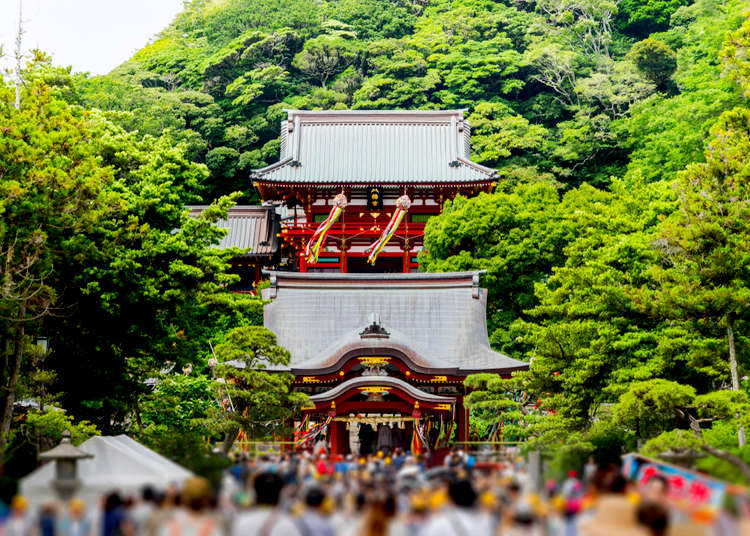
Kamakura, Japan’s ancient capital, is a beloved day-trip destination for Tokyoites and travelers alike. At its heart lies the magnificent Tsurugaoka Hachimangu Shrine, a symbol of Kamakura’s rich history and culture.
Its brilliant vermilion color is breathtaking even from afar and once you’ve started exploring its vast shrine grounds, you’ll make one fascinating discovery after another. We’ll guide you around to show you some of the shrine’s most impressive spots that you absolutely cannot miss when visiting Kamakura!
Tsurugaoka Hachimangu Shrine, a Prominent Landmark and Remnant of the Kamakura Shogunate
Indeed, Tsurugaoka Hachimangu Shrine is emblematic of Kamakura itself. Its history dates back to 1063, when Minamoto no Yoriyoshi, who worshiped the Iwashimizu Hachimangu Shrine in Kyoto’s Yawata as his patron deity, established a branch of the shrine in Kamakura’s Yuigahama area.
Later, in 1180, Minamoto no Yoritomo relocated the shrine to its current location. This move further solidified Kamakura as the undeniable center of the Kamakura Shogunate, founded in 1191 by Yoritomo himself.
Although the shogunate eventually faded, the shrine endured. It continued to play a central role in daily life, religion, and various aspects of Japanese culture.
To this day, Tsurugaoka Hachimangu draws numerous visitors for different reasons—whether to worship, attend festivals, or enjoy the lush natural surroundings.
We highly recommend visiting the shrine first thing in the morning, when the grounds are comparatively quiet. It’s the perfect time to explore this historic and enigmatic site at a leisurely pace.

Walking Dankazura, the Stone Path Shrine Approach
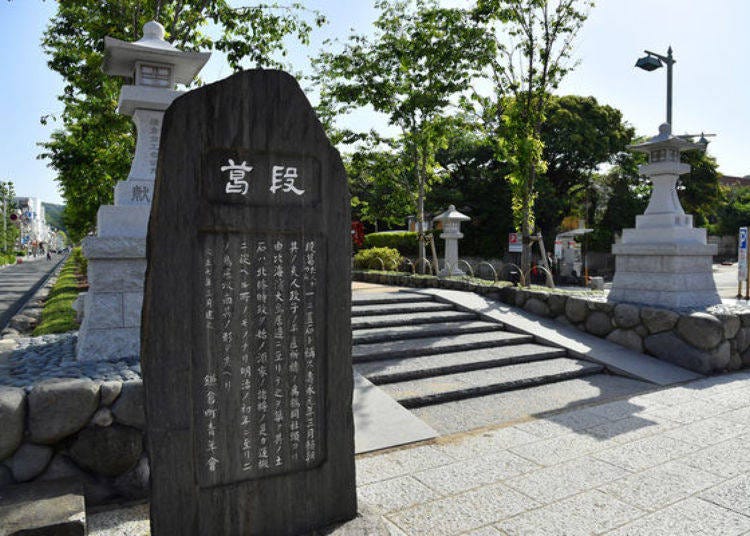
Long ago, the beautiful stone path known as Danzakura was built to stretch straight from Yuigahama to Tsurugaoka Hachimangu. It was created as a prayer for the shogun’s wife, wishing her a safe and smooth delivery of their child.
The most traditional way to worship at the shrine is to walk along Danzakura, staying in the center of Wakamiya Oji.
As you approach Ninotorii—the striking vermilion gate that marks the entrance to the shrine grounds—the path begins to narrow, and the banks lower. This clever design creates an optical illusion, making the rest of the path appear longer than it actually is.
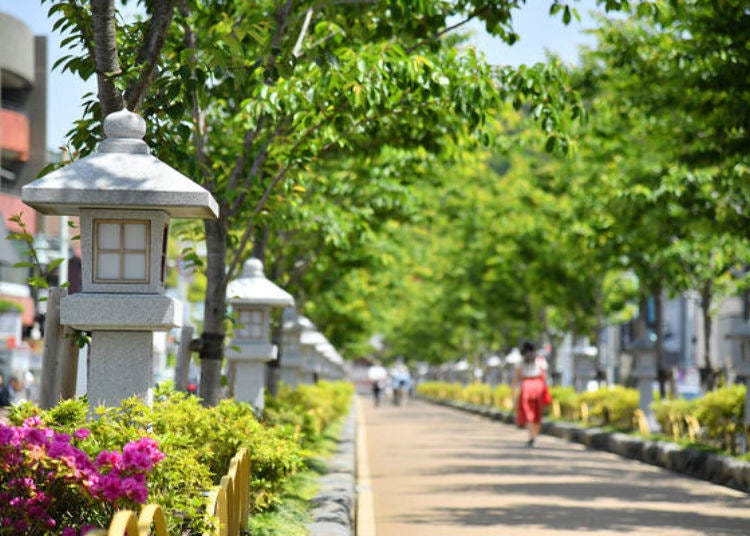
Through Sannotorii Gate To Tsurugaoka Hachimangu Shrine
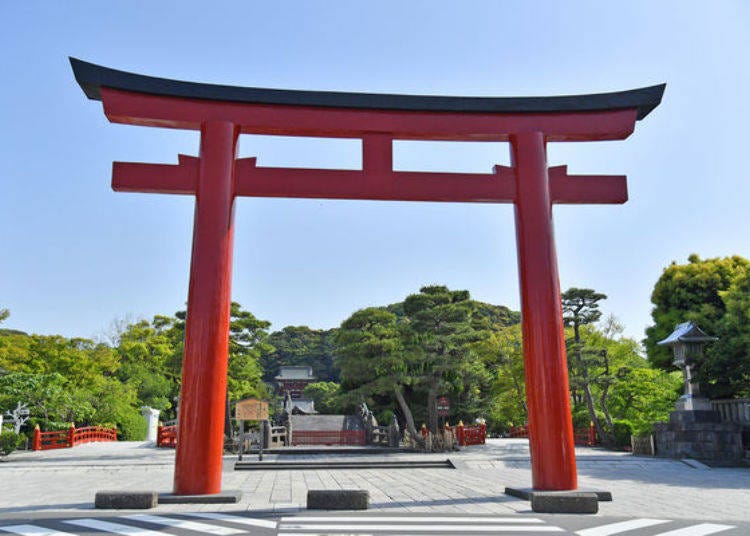
A large vermilion torii gate rises before you. This is Sannotorii, the entrance to Tsurugaoka Hachimangu and a perfect spot for a commemorative photo.
By the way, the first of the three gates is called Ichinotorii and is made of stone.
If you have time, consider walking back along the Danzakura shrine approach toward the sea.
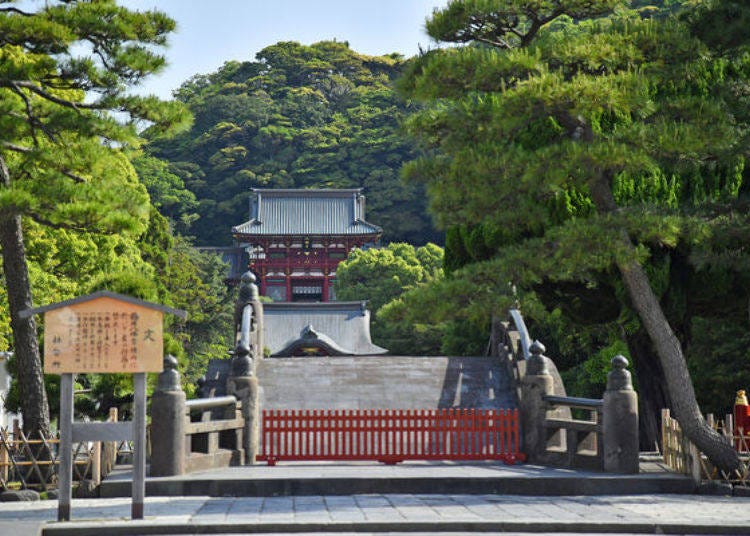
Pass through Sannotorii and you’ll be able to see the shrine’s maidono (stage), shining vermilion red against the green of the forest, as well as the two-storied gate called romon.
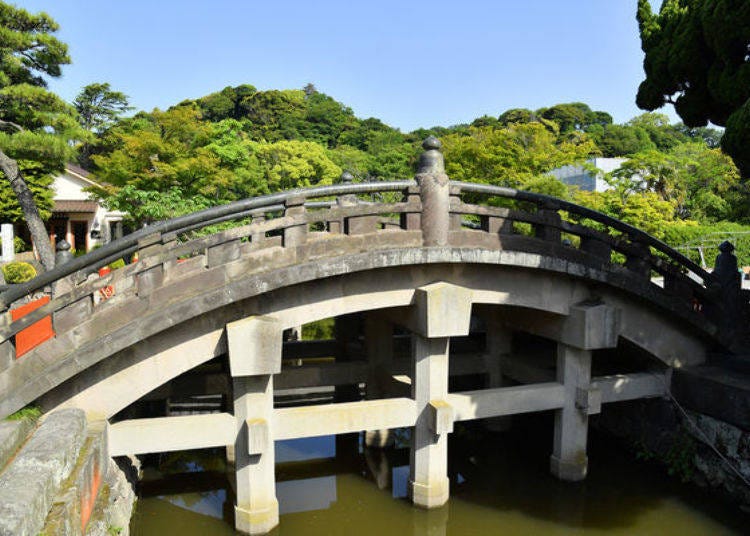
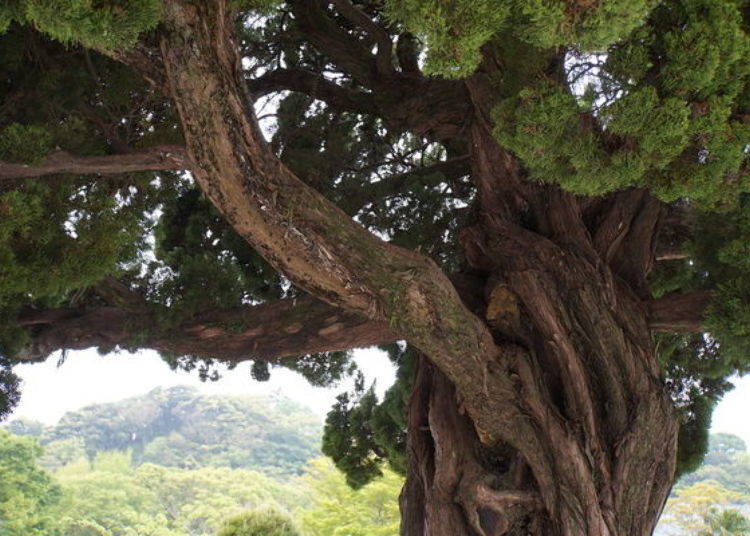
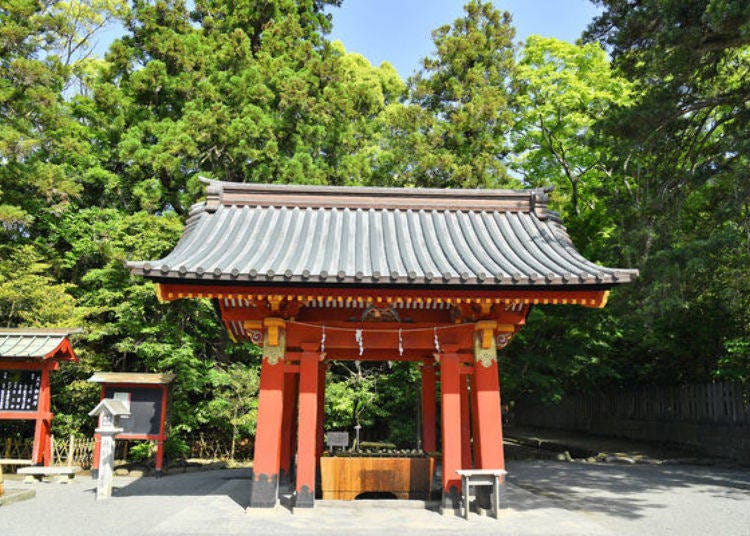
After cleaning your hands at the temizuya basin, proceed along the main approach and you’ll get to the majestic maidono stage, painted in a beautiful red.

According to legend, this beautiful building stands on the spot where Shizuka Gozen—one of the most famous women in Japanese literature—danced and composed a poem while longing for her beloved, Minamoto no Yoshitsune.
During the Kamakura Matsuri festival in spring, this building becomes the venue for performances of Shizuka’s Dance.
Throughout the year, it is also a popular site for traditional weddings, adding to its charm and significance.
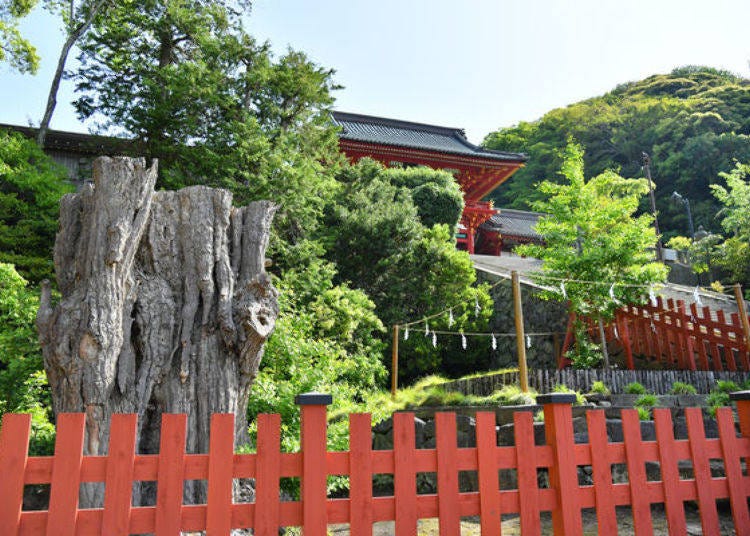
Further ahead stands a large ginkgo tree that was once over 1,000 years old and designated a national monument of Kanagawa Prefecture. To the left, you’ll find the large stone steps leading up to the main shrine.
Legend has it that this ginkgo was the site where the third Minamoto shogun was assassinated by his nephew, who hid behind the tree.
Unfortunately, the ancient ginkgo had to be felled in 2010. However, a young bud began sprouting from its remaining roots, quickly earning the nickname “the old tree’s child.”
This parent-child connection has come to symbolize hope for the future and approaching life with a hopeful heart.
Up the Stone Steps to the Shrine’s Main Hall
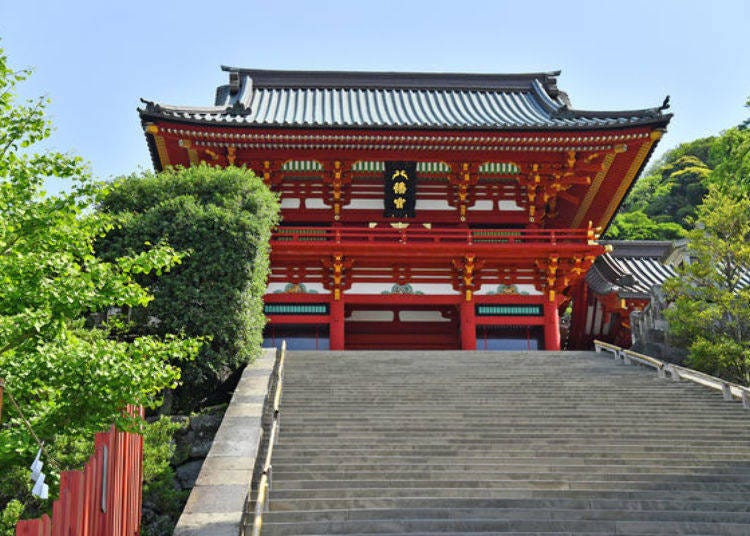
With every step you climb, the main hall comes into view. The gold-on-black sign reads “Hachimangu,” and, with a bit of imagination, the first character 八 resembles a pigeon.
White pigeons are considered messengers of the deity Hachiman, and you’ll often spot several of them around the shrine precincts.
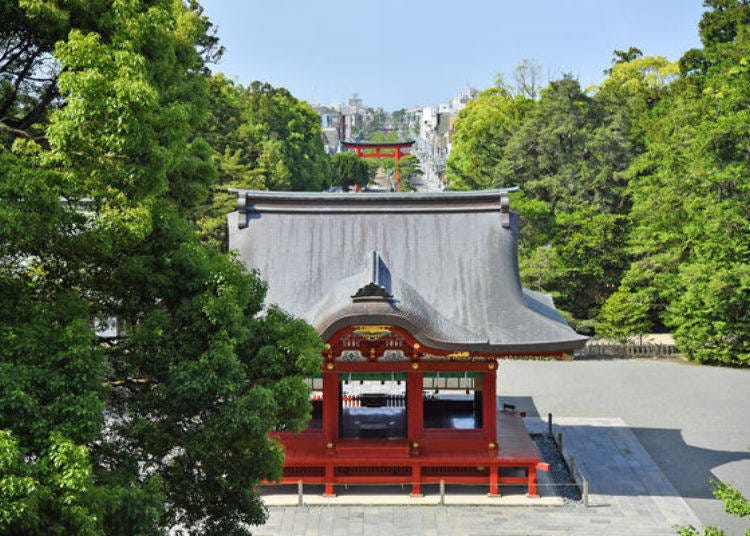
Looking back at the stone steps, you can see the entire shrine approach stretching all the way to Yuigahama. The air was clear on our visit, so we could even spot Izu Oshima in the distance. The scenery of Kamakura sprawling at your feet and the ocean in the back is magnificent.
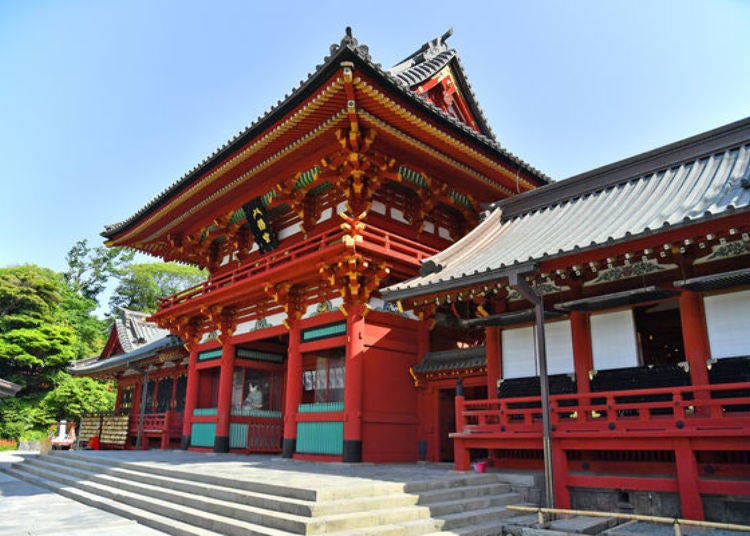
The main shrine enshrines three deities in total: Emperor Ojin, Himegami, and Empress Jingu. The current shrine was built in 1828 by the Shogun Tokugawa Ienari. Shining in vermilion red, the majestic building is designated as important cultural property. If you want to worship, bow twice, clap twice, say a quiet prayer, and bow once more in front of the main hall.
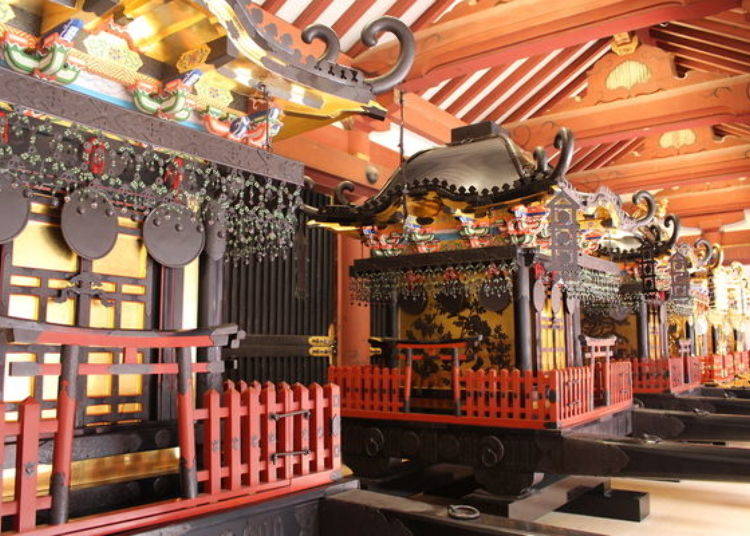
Tsurugaoka Hachimangu shrine is deeply connected to Japan’s samurai culture and is also home to numerous national treasures, such as tachi long swords, archery-related items, a robe, a lacquered inkstone case, and more. They’re stored in the Treasure House just next to the Main Hall, so don’t miss out on the opportunity to see them from up close.
・Hours: 8:30 a.m. – 4:00 p.m., irregular holidays
・Admission: 200 yen for adults, 100 yen for children
*The exhibits change at the end of the year.

After praying at the shrine, Japanese people often go buy an omikuji, a fortune slip. They’re available at three different locations: in front of the main hall, at the bottom of the stone stairs, and next to the maidono. Tsurugaoka Hachimango offers two kinds of omikuji, with the standard one being available for 100 yen and the ones with a little pigeon charm cost 200 yen.
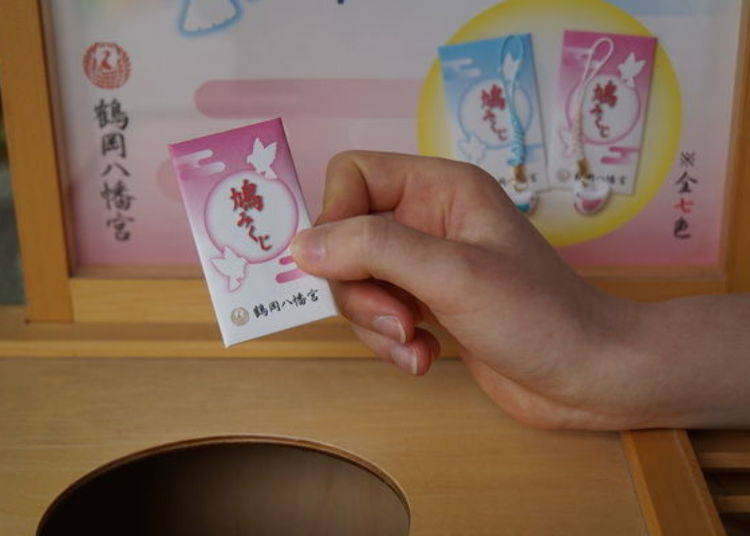
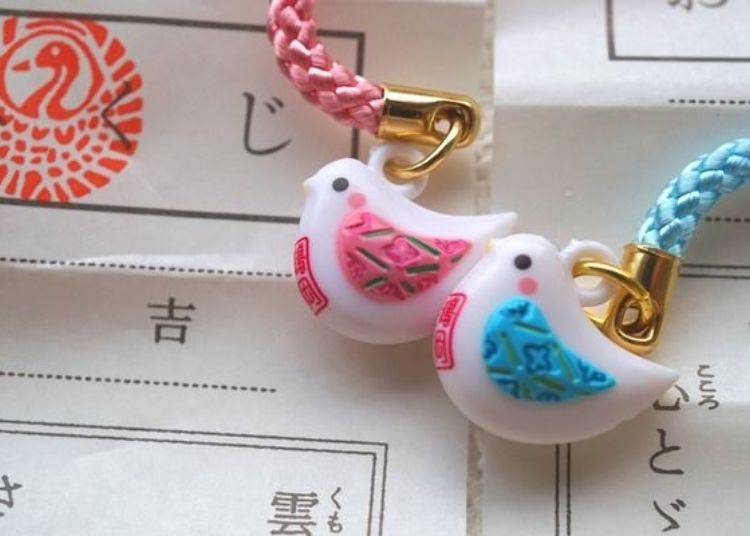
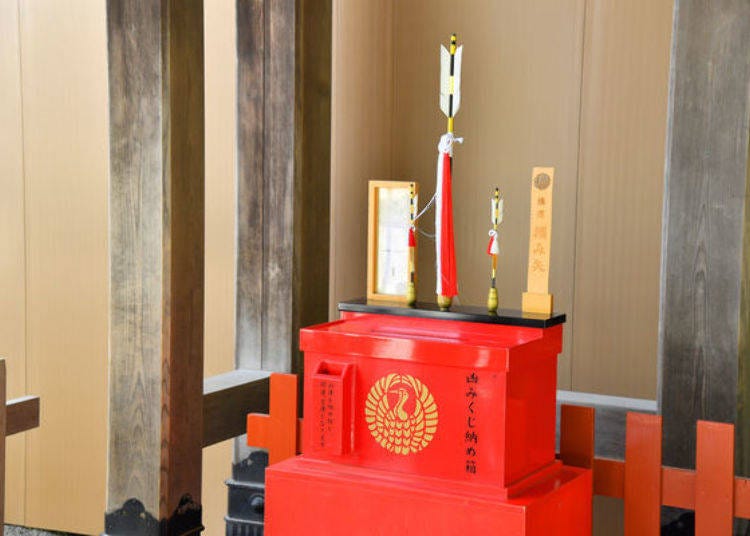
Should your fortune slip show misfortune or even great misfortune, there’s no need to worry. Tsurugaoka Hachimangu shrine has unique “bad omikuji boxes” that let you exchange your misfortune slips to great fortune slips! You simply put the fortune slip into the box and then put your hand around the arrow in the middle for a moment.

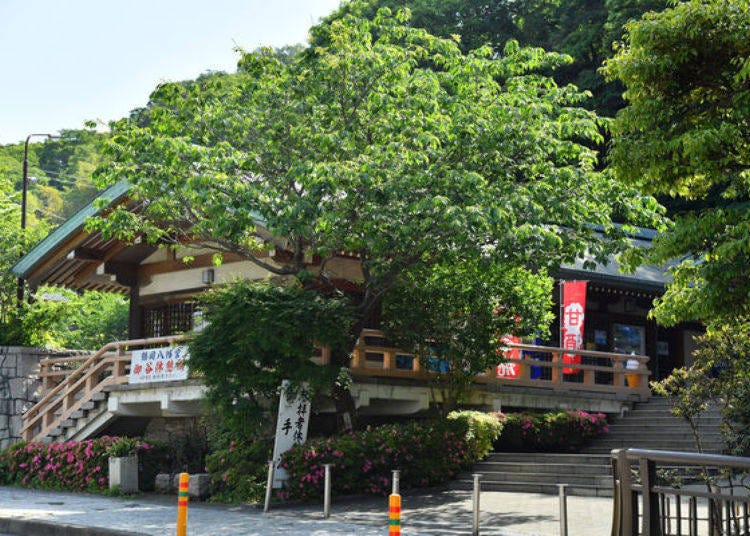
Why not take a short break after worshiping at the main hall? There are three free resting areas on the precincts at Yanagihara, Oyatsu, and Genpei Pond. Each offers a variety of light snacks and tea. It’s a great opportunity to rest one’s feet and take in the scenery and atmosphere of the shrine.
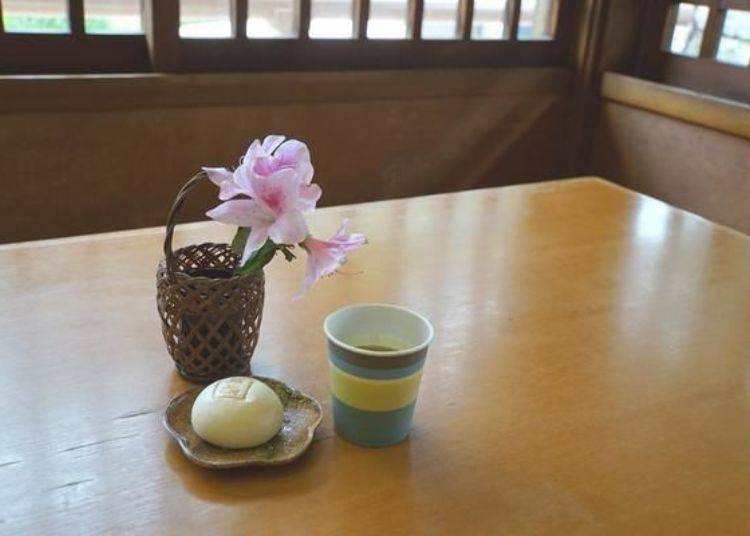
Exploring the Shrine Grounds and Its Many Smaller Shrines
This is the Maruyama Inari Shrine, dedicated to Inari, the deity of fertility and prosperity. In the past, people prayed here for a bountiful harvest, but today, it is a popular spot for those seeking success in business.
It is the oldest shrine within the precincts, dating back to the Muromachi era, and is designated as a national important cultural property.
Each of the smaller shrines on Tsurugaoka Hachimangu’s grounds is known for bestowing different blessings upon its visitors.
You’ll also find a variety of lucky charms, wishing plaques, and stamps available—perfect for collecting unique souvenirs during your visit.
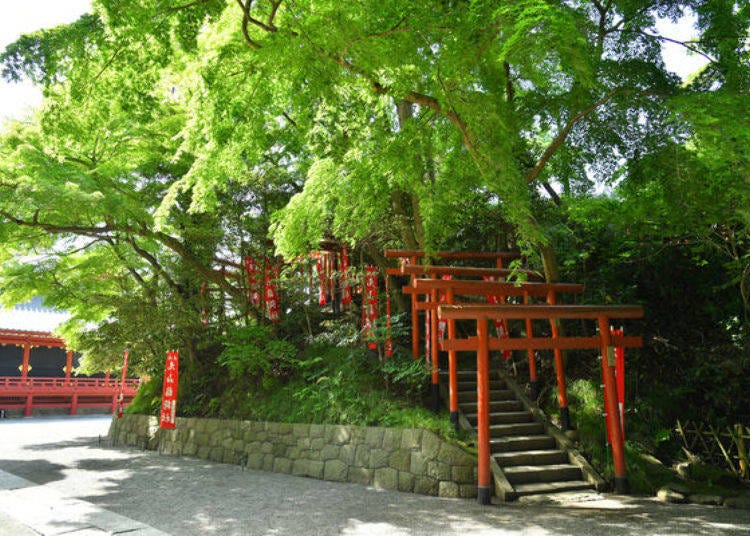
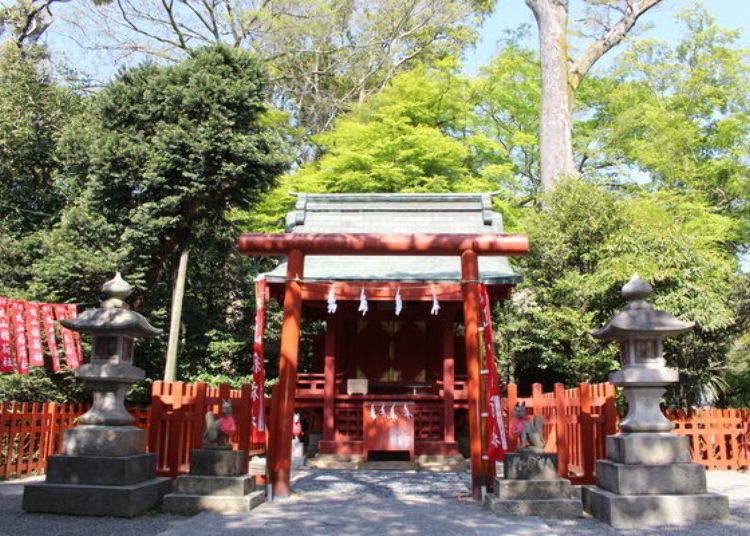
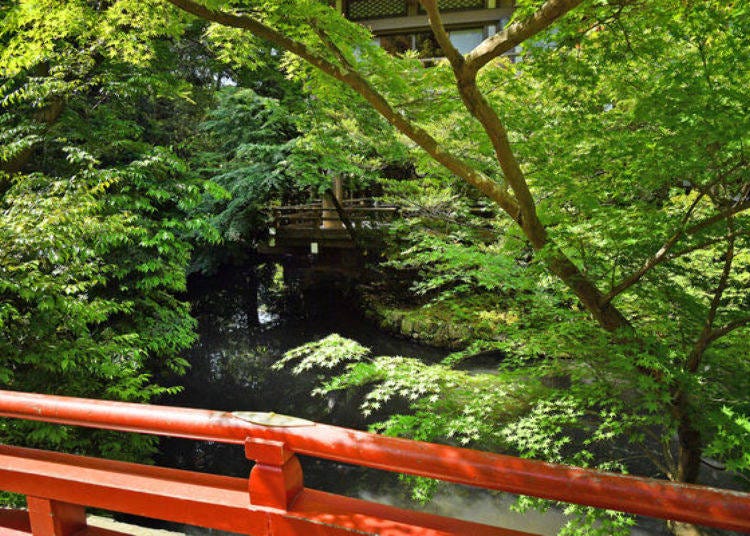
Head back towards the main shrine and you’ll find the beautiful Yanagihara Shinchi Pond to the left, surrounded by lush green in summer and adorned with vivid colors in autumn.
In June, the Firefly Festival sees numerous fireflies illuminating the night, while the Cricket Festival in September is a stunning concert of nature.
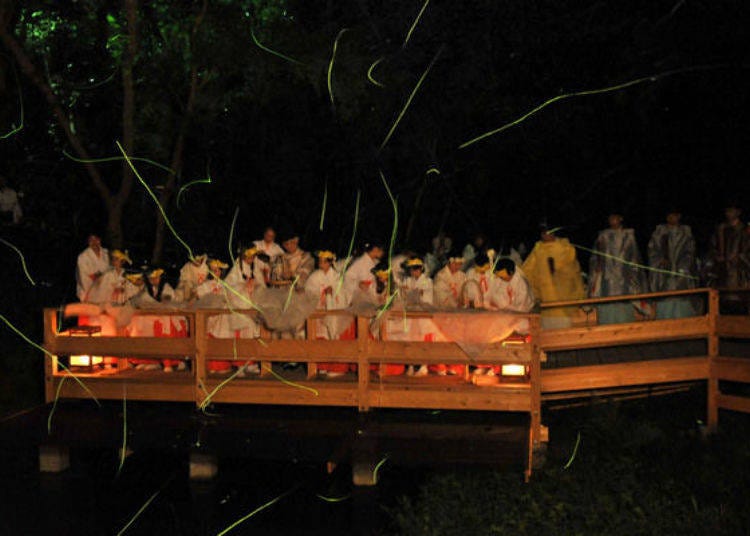
These two mysterious stones are on the way to Shirahata Shrine.
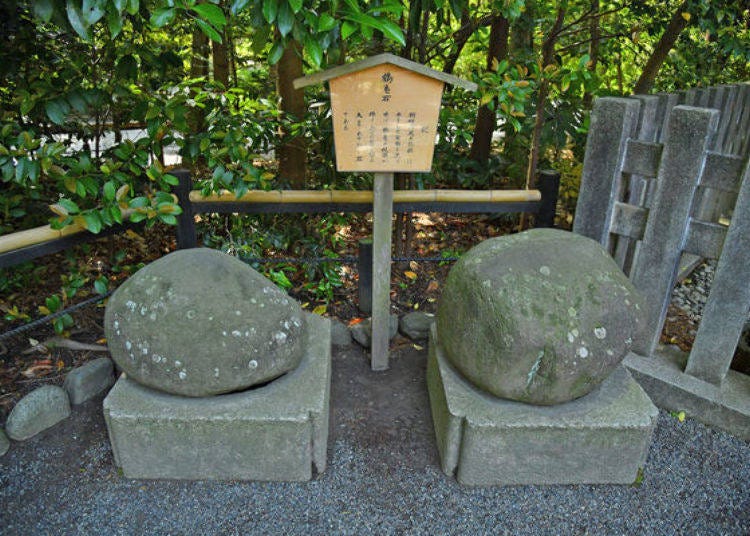

The flag of the Minamoto clan was white, so this shrine was given the literal name of “White Flag Shrine.” It is dedicated to Minamoto no Yoritomo and Minamoto no Sanemoto, his son, and said to bring fortune for academic achievements and other sorts of victory.
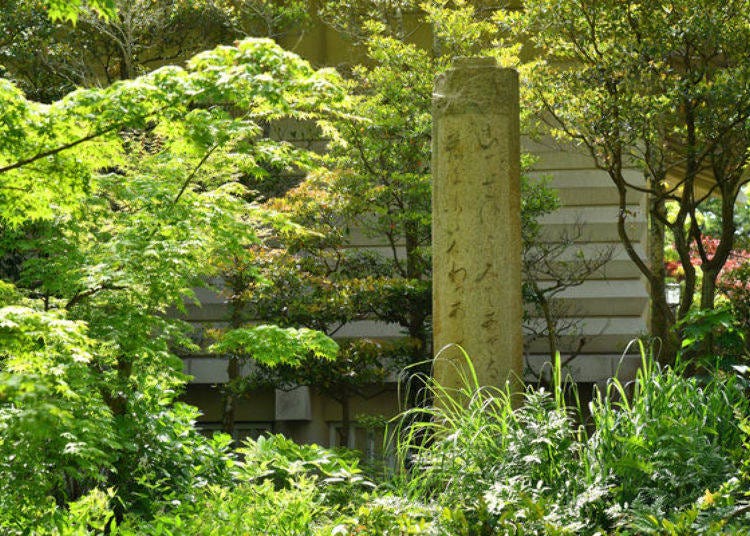
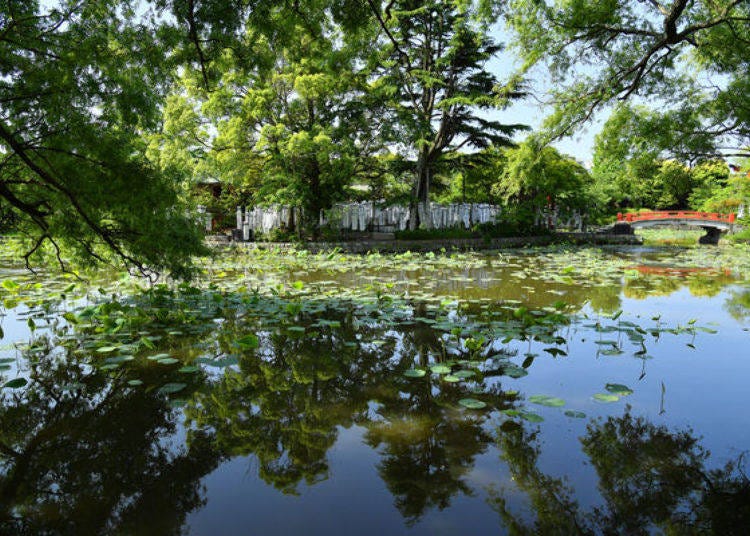
Heading back via the shrine approach of Shirahata Shrine, a large, beautiful pond spreads out before you. Tsurugaoka Hachimangu’s grounds feature two ponds: the Genpei Pond to the east and the Heike Pond to the west.
The Genpei Pond represents the Minamoto Clan, while the Heike Pond symbolizes the Taira Clan. Their long-standing rivalry ended with the Minamoto’s triumph and the establishment of the Kamakura Shogunate.
The Genpei Pond contains three islands, and the character for “three” is pronounced similarly to the character for “birth” in Japanese. In contrast, the Heike Pond has four islands, and “four” sounds like the Japanese word for “death.” This symbolic contrast is what gave the ponds their respective names.
The scenery here is breathtaking. In spring, dense cherry blossoms surround the ponds, while summer brings stunning lotus flowers blooming in red and white, creating unforgettable views.
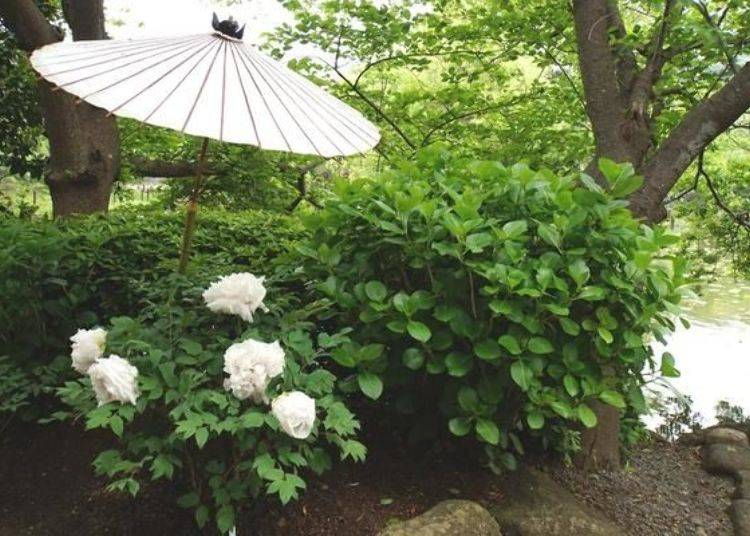
The Peony Garden (admission: 500 yen) is also near the Genpei Pond. It is open between January and February, as well as April and May when the peonies blossom beautifully. The well-maintained garden creates a wonderful atmosphere together with the many lotuses.
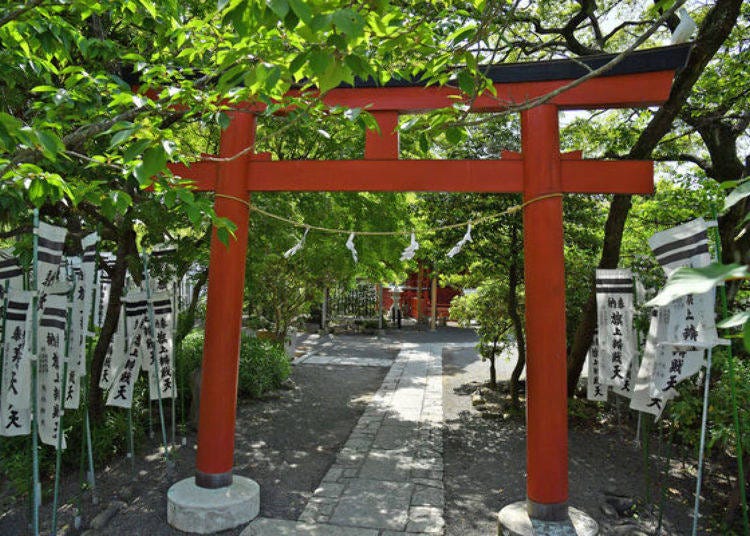
In the middle of the Genpei Pond stands the Hataage Benzaiten Shrine. It is said to have been built by Hojo Masako, a prominent female leader of the time. Oeyo, the wife of second shogun Tokugawa Hidetada is said to have worshiped to Benzaiten here. It’s also one of the Seven Lucky Gods of Kamakura and the white flag fluttering over the pond is a sight refreshing both heart and mind.
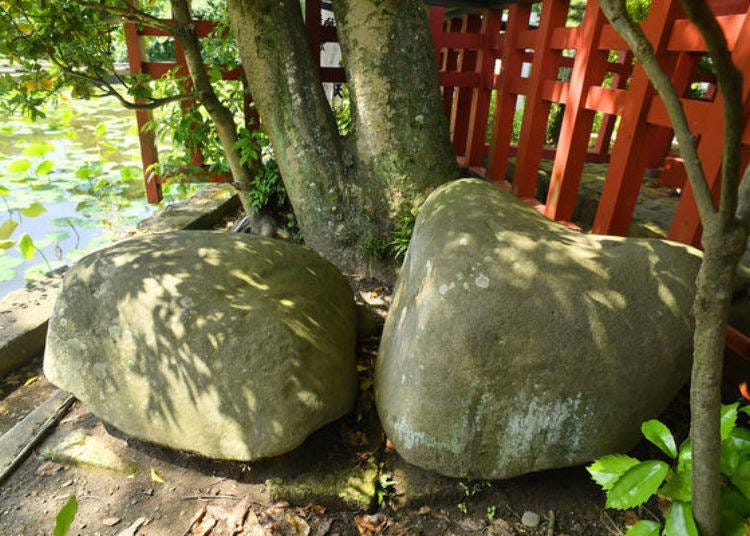

Last but not least, the path takes us to Café Kazenomori looking on the Heike Pond. The scenic seats offer a wonderful opportunity for an elegant break.
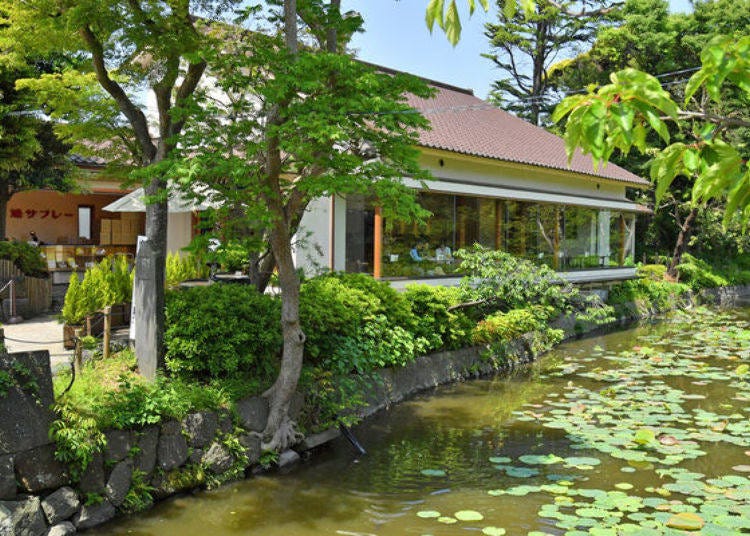
Sip some tea, try some sweets, or indulge in a full meal while gazing upon the pond spreading before you. You can see the old Museum of Modern Art from inside the café. It is being renewed right now and will reopen in spring 2019 under a new name.
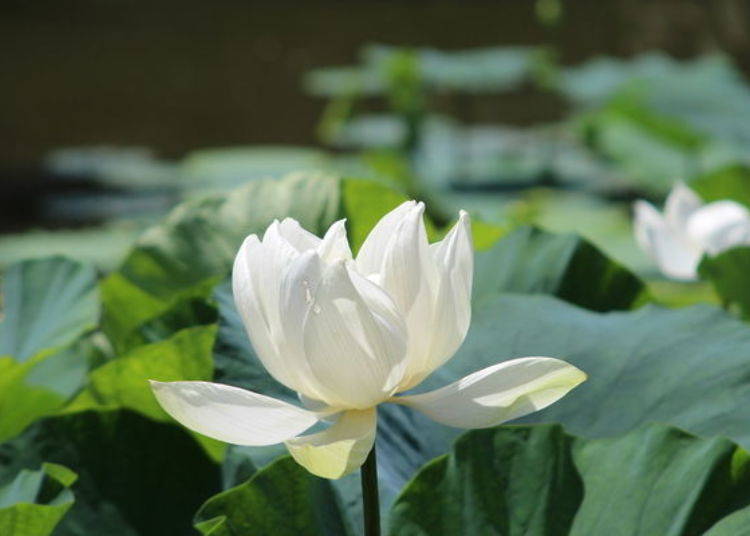
-
Café Kazenomori風の杜
- Address 2-1-31 Yukinoshita, Kamakura-shi, Kanagawa 248-0005
・Hours: 9:30 AM – 4:30 PM (changes by season)
・Closed: open dailyVacancy search, reservation
-
from 18,480JPY 1room, 2adults
Check with our partner site as the latest rates, rate details, and guest room requirements may vary.
Deeper Into History: Tsurugaoka Hachimangu Shrine’s Many Events
Tsurugaoka Hachimangu is an ancient and significant shrine, hosting a wide variety of festivals and events throughout the year.
Highlights include Hatsumode (the first shrine visit of the year), Setsubun, the Iris Festival, the Firefly Festival, Tanabata, and the Grand Festival in September.
The shrine’s lush grounds also provide seasonal beauty, featuring cherry blossoms, irises, wisteria, lotus flowers, and vibrant autumn leaves.
No matter when you visit, you’ll find yourself immersed in its tranquil and enigmatic atmosphere. It’s as though you’ve stepped back in time to experience a very old and cherished part of Japanese culture.
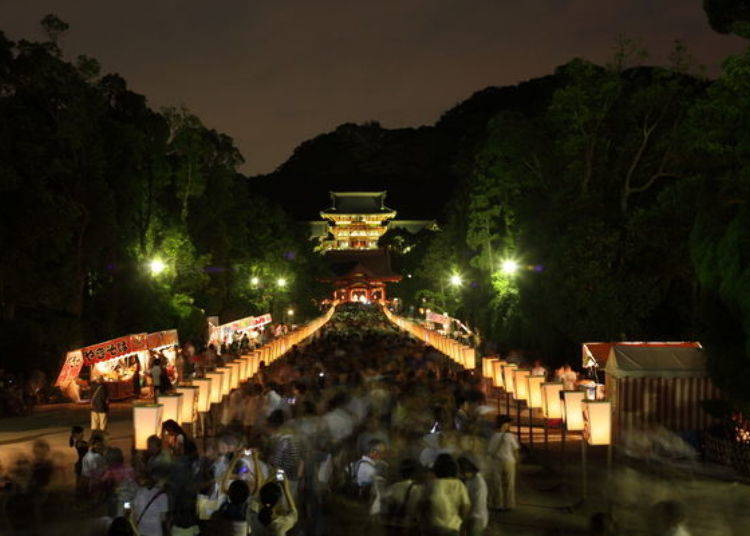
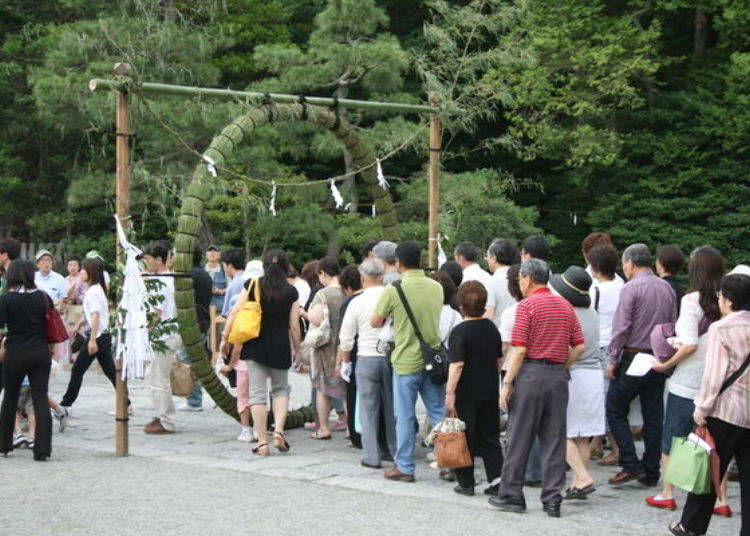
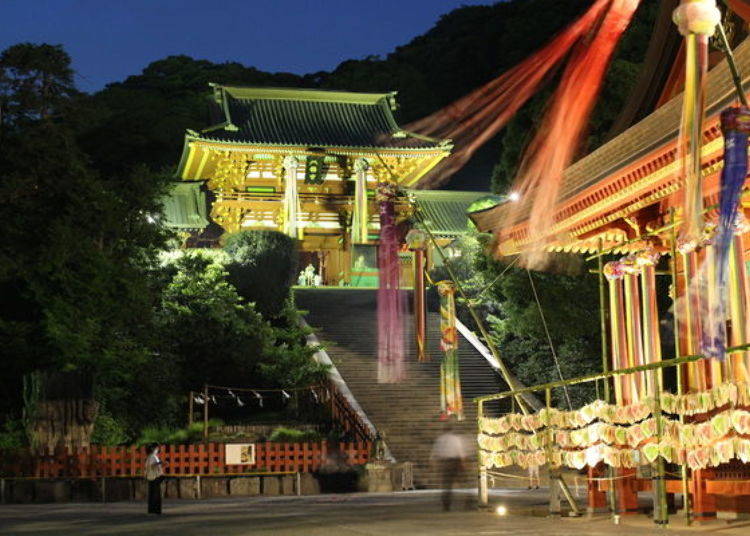
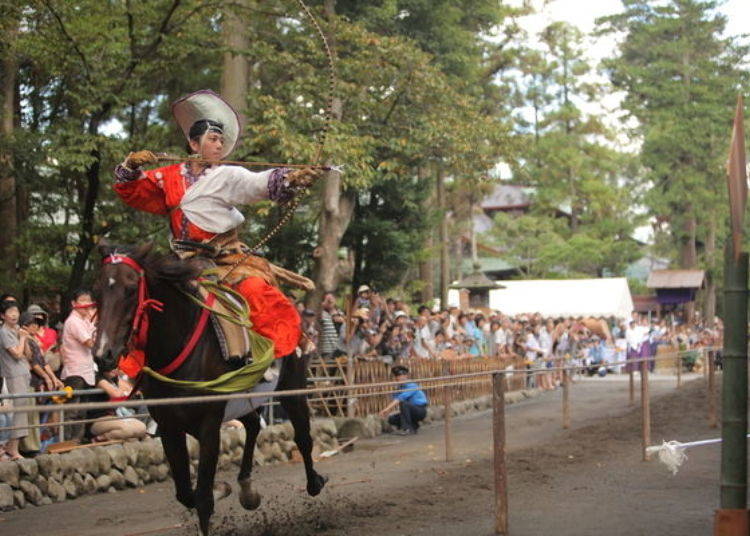
Tsurugaoka Hachimangu Shrine isn’t only a must-see spot for history buffs. The ancient site, nestled in an equally ancient city, offers a unique glimpse into Japanese history and culture while casting an enigmatic spell on you with lush nature and a one-of-a-kind atmosphere. Take your time exploring the vast shrine grounds—there are many discoveries to be made.
-

-
Address
2-1-31, Yukinoshita, Kamakura-shi, Kanagawa, 248-8588
View Map -
Nearest Station
Kamakura Station (JR Yokosuka Line / JR Shonan Shinjuku Line / Enoshima Electric Railway Line)
10 minutes on foot
- Phone Number 0467-22-0315
-
Address
2-1-31, Yukinoshita, Kamakura-shi, Kanagawa, 248-8588
*Prices and options mentioned are subject to change.
*Unless stated otherwise, all prices include tax.
Popular Tours & Activitiess
Recommended places for you
-

Ueno Zoo (Ueno Zoological Gardens)
Zoos, Aquariums & Botanical Gardens
Ueno
-

The Tokyo Station Marunouchi Building
Landmarks
Tokyo Station
-

TOKYO SKYTREE®
Landmarks
Ryogoku / TOKYO SKYTREE(R)
-

Nezu Shrine
Shrines
Ueno
-

Shinjuku Gyoen National Garden
Gardens
Shinjuku
-

Kappabashi Street
Old Towns (Shitamachi)
Asakusa
-

Strawberries, Style, and Tokyo’s Coolest Neighborhood: Winter Afternoon Tea in Kichijoji
by: Guest Contributor
-

Keisei × Keikyu 16-Temple Goshuin Tour: Discover Deeper Tokyo & Yokohama
by: Guest Contributor
-

A Travel Game Changer! Go Hands-Free Between Tokyo and Kyoto with LUGGAGE EXPRESS by JTB and JR Tokai
by: Guest Contributor
-

[Extended Offer!](12% OFF KKday Coupon) Mt. Fuji Autumn Leaves, Powder Snow & More! 15 Best Tours to Experience Japan in Fall & Winter
-

How to Get Don Quijote's Exclusive 2025-2026 Winter Gift (+Tax-Free Savings)
-

The Best Japanese Food Representing 2025! 'Dish of the Year®' Annual Award Results Announced
Inspiration for Accommodations
-

Enjoy Mt. Fuji from the Comfort of Your Room! Recommended Ryokan with Mt. Fuji View
-

Stay Near the Cherry Blossoms! Hotels for Cherry Blossom Viewing in Tokyo
-

Family-Friendly Hotels with Free Shuttle to Disneyland: Convenient Access for a Magical Stay
-

Top Ranked Hakone Hotels with Mt. Fuji View: Enjoy Stunning Scenery from Your Private Space
-

Convenient Tokyo Hotels with Airport Shuttle: Ideal for Families and Heavy Luggage
-

Stunning Tokyo Tower View Hotels: Enjoy Spectacular Scenery from Your Private Space
-

Convenient Asakusa Hotels with Kitchens: Ideal for Extended Family Visits
-

Experience Luxury: Hakone's 10 Best Five-Star Accommodations
-

Enjoy Mt. Fuji Autumn Leaves! Top Hotels Near the Popular Autumn Leaves Corridor
-

Experience Hakone Fall Foliage from Your Room with Stunning Views
-

Tokyo Fuku Meguri – Tokyo Jinja Good Luck Tour
-

Visiting a Japanese Shinto Shrine – Everything You Need to Know, Step by Step!
-

Strolling through Japanese Culture: 10 Gorgeous Shrines in Tokyo
-

Tokyo Tsukiji|Tsukiji Area Map & Sightseeing Information
-

Secrets to Shopping in Japan: Guide to Annual Sales in Japan & Where to Shop
by: Miyu Shimada
-

7 Things You Didn’t Know About Sensoji Temple - Tokyo's Oldest Temple
- #best ramen tokyo
- #what to buy in ameyoko
- #what to bring to japan
- #new years in tokyo
- #best izakaya shinjuku
- #things to do tokyo
- #japanese nail trends
- #what to do in odaiba
- #onsen tattoo friendly tokyo
- #daiso
- #best sushi ginza
- #japanese convenience store snacks
- #best yakiniku shibuya
- #japanese fashion culture
- #best japanese soft drinks















